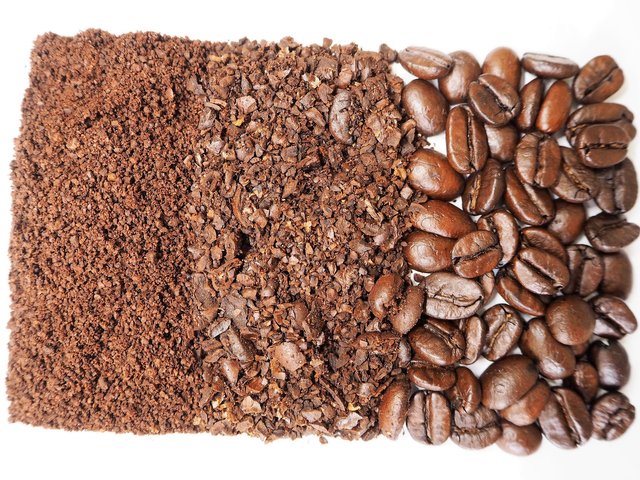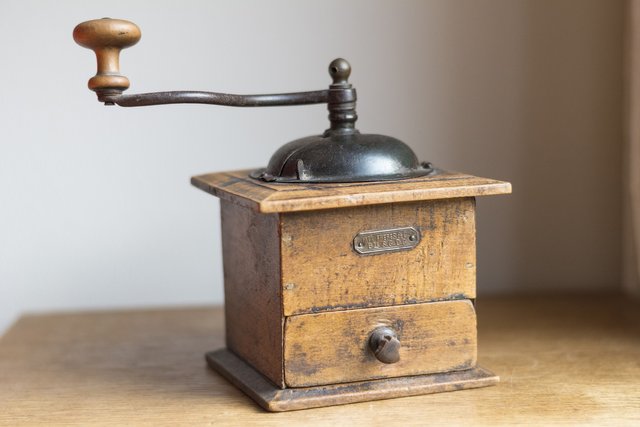Grinding your coffee
Did you know that when you grind your coffee beans, the surface area of the coffee can increase by over 10,000 times? Most people buy and use ground coffee, mainly because that is the easiest way and you can find it on the shelves of every supermarket. Easy and convenient, but even cans of coffee that have been vacuum-packed are going to be a lot less fresh than coffee you grind yourself.
The coffee’s aroma and flavor are best protected by the bean itself, but even the whole bean loses aroma and flavor to dissipation and oxidation over the course of several weeks. After coffee is roasted, we are in a race against time and oxygen and the effects of oxidation are about exponentially increased by grinding (remember the 10,000 increase in area). Once ground, the most fragrant compounds begin to oxidize immediately, as your nose can tell you.
So what actually happens after grinding? Carbon Dioxide, created during the roasting process and stored inside the bean, slowly emanates from the bean after roasting. This release of CO2 slows the effects of oxidation. After grinding, the CO2 will dissipate within minutes and the loss of aromatic compounds and antioxidants will quickly follow.
So for fresh coffee, grind small amounts right before you brew. As we are looking into how to improve our daily cup of coffee, we’ll look at grinding today. If you are not already doing it, it can greatly improve the quality of your coffee when grinding it yourself. However, there are quite a few pitfalls and things to take into account.

One of the most important things to look after when you are grinding your coffee is the grind consistency. About 70% of the coffee bean is insoluble organic matter. The rest, 30% can dissolve but, according to the Coffee Brewing Institute, extracting anything less than 18% of the coffee and more than 24% can yield an unwanted taste or flavor.
Under extraction is when you have not extracted enough flavor out of your ground coffee (your grounds are too coarse), your coffee turns bitter: over extraction is when you have extracted too much flavor out of your coffee - and it becomes overpowering, unpleasant and bitter (your grounds are too fine).
The more inconsistent your grind, a mix of small and big particles, the more likely you’ll be to under- or over-extract certain coffee grounds. If your grind is not consistent the overcooked (finer) grounds can make the entire mug bitter while the undercooked (coarser) grounds can leave it weak and sour. So at any price you should try to avoid under-extraction and over-extraction.
Ok, so we try to avoid under and over extraction, but what about grind levels and equipment?

First of all, do not use a blade grinder! Blade grinders are like blenders: a spinning blade smacks the beans to pieces. Some people say that you’re better off buying pre-ground coffee. Consistency is not very high if you look closely and they can only work by spinning extremely fast, which causes heat and friction. Your coffee may taste a little scorched and not so fresh. So try to find a burr grinder. Burr grinder use sharp cutting surfaces (somehow like milling stones), uniform pressure and rotation to ‘crush’ beans into a consistent grind. They can achieve this at low speeds, meaning no added heat, and maintain a precise and consistent uniform grind.
And then of course you should adjust your grinding size to your brewing method!
Use coarser grinds for cold brew coffee, percolator, French press and when cupping.
Use medium grinds for drippers, cone shaped pour over brewers and flat bottom drips
Use finer grinds for espresso, mokka and Turkish coffee pots.
Still not satisfied with the result and you think you can do better? Try changing brewing time, water temperature and/or grind level:
Your coffee is a bit sour? Try a longer brew time, lower water temperature and/or finer grind.
Your coffee is a bit bitter? Try the opposite!
Previous article from coffee series you can find under tag #cafescope.
You can see them all here.
Article was also published on Cafescope